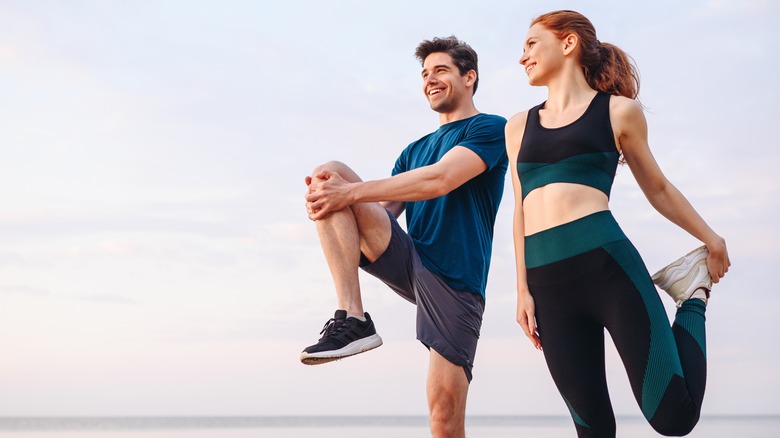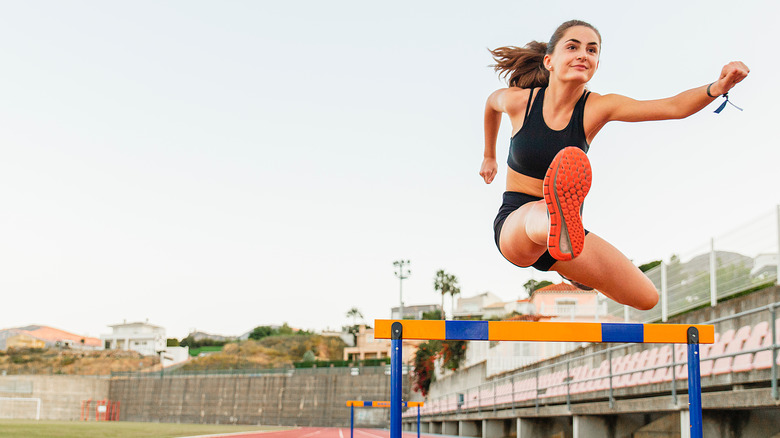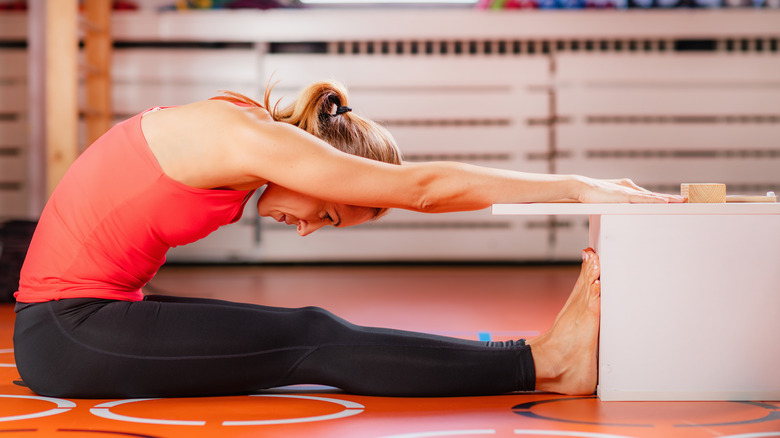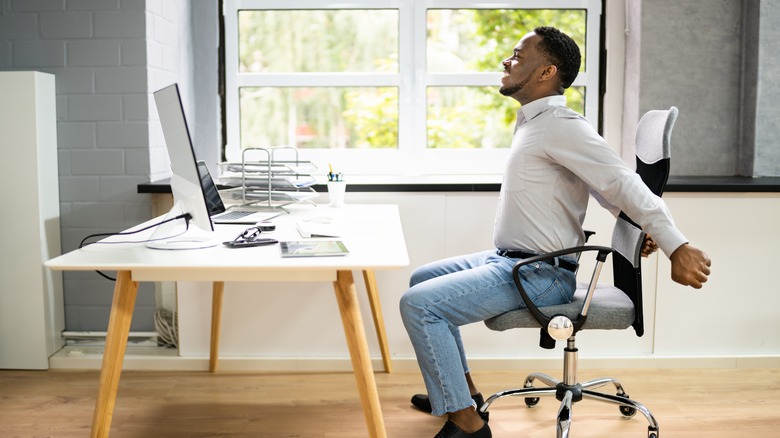Common Stretches That Can Actually Hurt You, And What You Should Do Instead
Stretching is incredibly important for your health. According to a study in JAMA, the average American adult stays seated for 6.5 hours per day. This leads to tight muscles and can increase the risk of joint pain and injury later in life — but daily stretching helps keep muscles flexible, strong, and healthy, explains Harvard Health. It can also increase your performance in sports and other physical activities, according to Healthline. If you're prepping to run that 5K or complete any other physical feat, stretching is extremely important.
However, not every stretch is worth your time. Some can be helpful and simple to do, while others are complex and may lead to injury. It's also important to consider the difference between dynamic and static stretches. Dynamic stretches actively move muscles through a stretching position, whereas static stretching consists of extending and holding those muscles without movement, explains MedicalNewsToday. With this in mind, there are some common stretches that can actually hurt you, depending on what you're trying to accomplish.
Hurdler stretch can put pressure on your knees
As its name suggests, the hurdler stretch makes you look like you're jumping a hurdle while doing it. You may have performed this stretch in gym class. While on the ground, one leg is extended in front of you while the other is bent behind you. However, this stretch may not make you move like a hurdler. While the extended leg may be getting a deep hamstring stretch, the non-stretched leg behind you is putting a lot of pressure on your knee, according to Shape.
Thankfully, there are alternate versions of this stretch that achieve the same results without putting stress on the knee. One, called a modified hurdler's stretch, also involves extending one leg out in front, but keeps your opposite leg bent in front of you rather than behind you, explains the American Council on Exercise (ACE). This provides the same amount of stretch, opening your hips and hamstring without potentially hurting your knee.
Sit-and-reach can strain your lower back
Many people have lower back problems, which again often stems from sitting down for too long, according to the UCLA Spine Center. There are many ways to address that pain, but one stretch that some people do to try and increase their flexibility as well as get some relief is the sit-and-reach. You may have done this in high school in the form of a test. While seated with your legs straight out in front of you, you lean forward to try and touch as close to your toes as possible (per TopEndSports).
It seems simple, but the sit-and-reach doesn't really provide that much flexibility, and can actually strain your lower back and knees instead of relieving pain, according to Shape. To decompress the spine and help with pain, try doing a seated spinal twist instead. While seated, place your left foot outside of your right knee, then twist in the opposite direction, explains Howcast. Then repeat on the opposite side.
Assisted pec stretch can injure the shoulder
The pectoralis muscles are some of the biggest muscles in the body, connecting the front of the chest wall with the upper arm and shoulder bones (per Britannica). Yet despite their size and importance, they don't get stretched out a lot. This is true even though many people have a tight chest from being hunched over at their desk much of the day, creating a tight upper back, according to LOR Physical Therapy. One exercise that many people use to loosen pec muscles is the assisted pec stretch. The person either grabs onto something behind them while leaning forward, or a workout partner pulls their arms backwards, giving their pecs a huge stretch. Unfortunately, this is a stretch that can lead to a lot of strain on your shoulder if performed incorrectly, according to Well+Good.
Instead, simply do arm circles. You may have also done this one in high school. Stand up straight with your arms out wide to your sides, like you're about to take flight. Start making small circles with your arms, growing the circles bigger and bigger in range without flailing, then repeat in the opposite direction, according to Nuffield Health. Try holding the stretch for 30 seconds.




